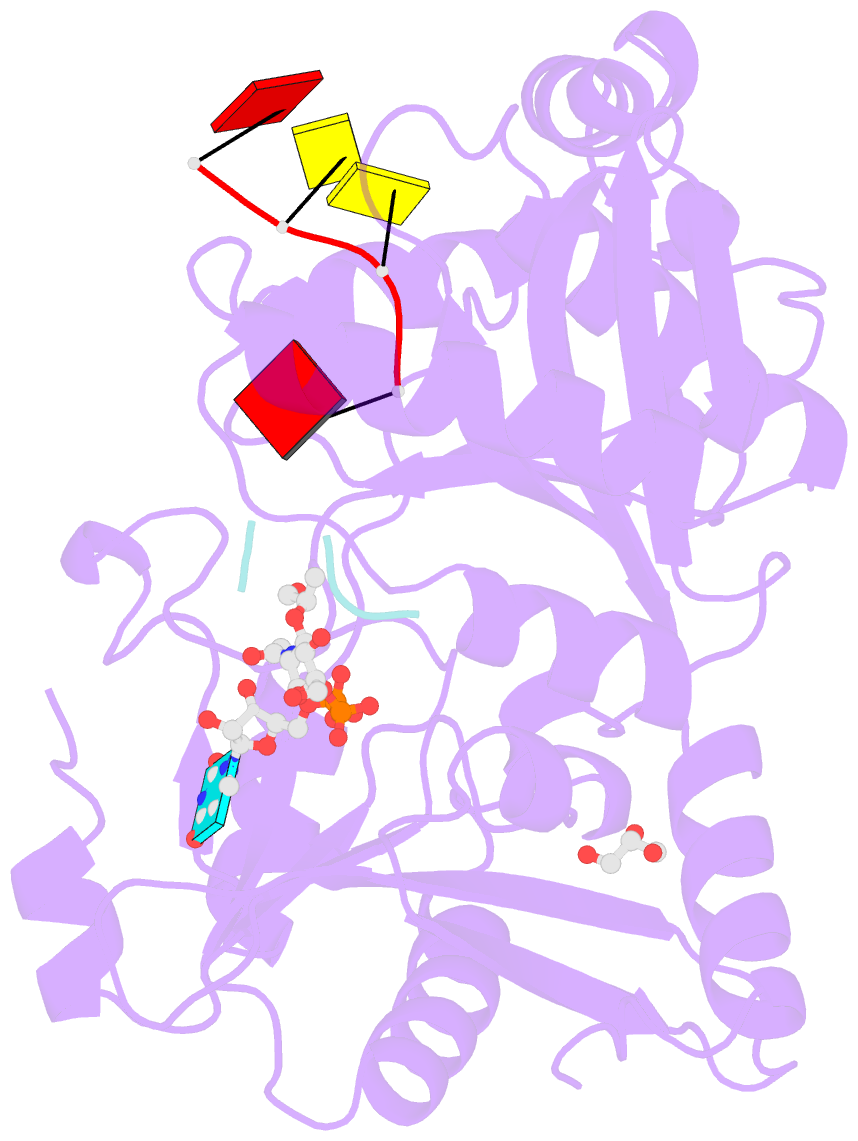Summary information and primary citation
- PDB-id
- 7z5y; SNAP-derived features in text and JSON formats;
DNAproDB
- Class
- transferase
- Method
- X-ray (1.71 Å)
- Summary
- Crystal structure of weissella viridescens femxvv non-ribosomal amino acid transferase in complex with a peptidyl-xna conjugate
- Reference
- Rietmeyer L, Li De La Sierra-Gallay I, Schepers G, Dorchene D, Iannazzo L, Patin D, Touze T, van Tilbeurgh H, Herdewijn P, Etheve-Quelquejeu M, Fonvielle M (2022): "Amino-acyl tXNA as inhibitors or amino acid donors in peptide synthesis." Nucleic Acids Res., 50, 11415-11425. doi: 10.1093/nar/gkac1023.
- Abstract
- Xenobiotic nucleic acids (XNAs) offer tremendous potential for synthetic biology, biotechnology, and molecular medicine but their ability to mimic nucleic acids still needs to be explored. Here, to study the ability of XNA oligonucleotides to mimic tRNA, we synthesized three L-Ala-tXNAs analogs. These molecules were used in a non-ribosomal peptide synthesis involving a bacterial Fem transferase. We compared the ability of this enzyme to use amino-acyl tXNAs containing 1',5'-anhydrohexitol (HNA), 2'-fluoro ribose (2'F-RNA) and 2'-fluoro arabinose. L-Ala-tXNA containing HNA or 2'F-RNA were substrates of the Fem enzyme. The synthesis of peptidyl-XNA and the resolution of their structures in complex with the enzyme show the impact of the XNA on protein binding. For the first time we describe functional tXNA in an in vitro assay. These results invite to test tXNA also as substitute for tRNA in translation.





